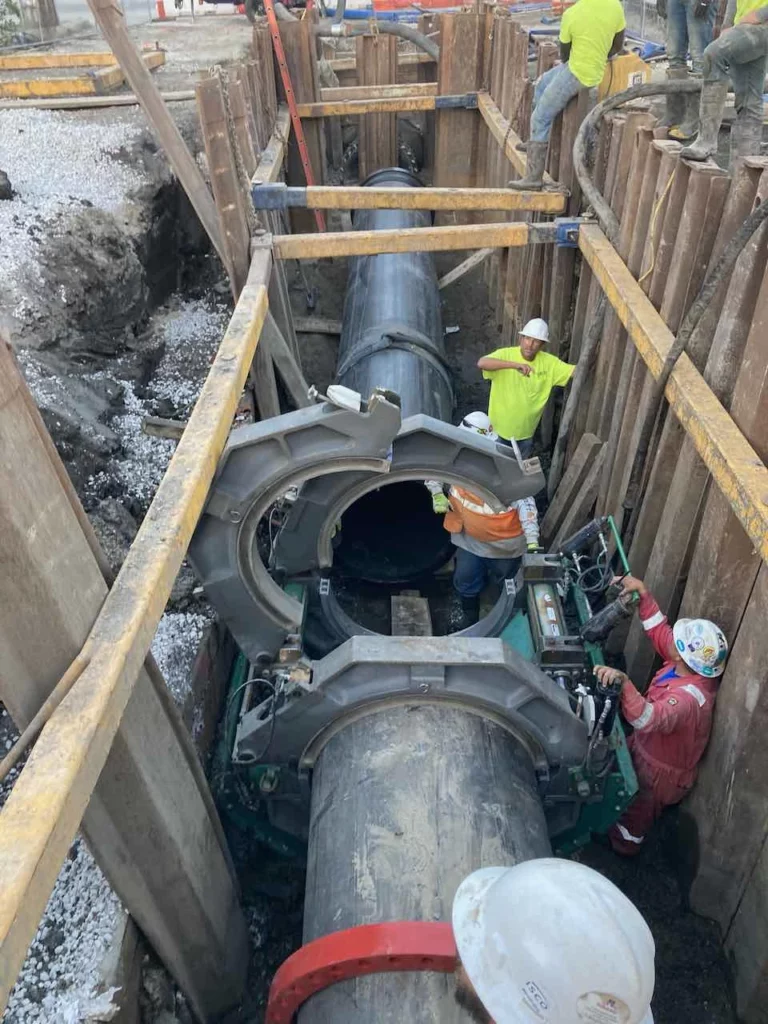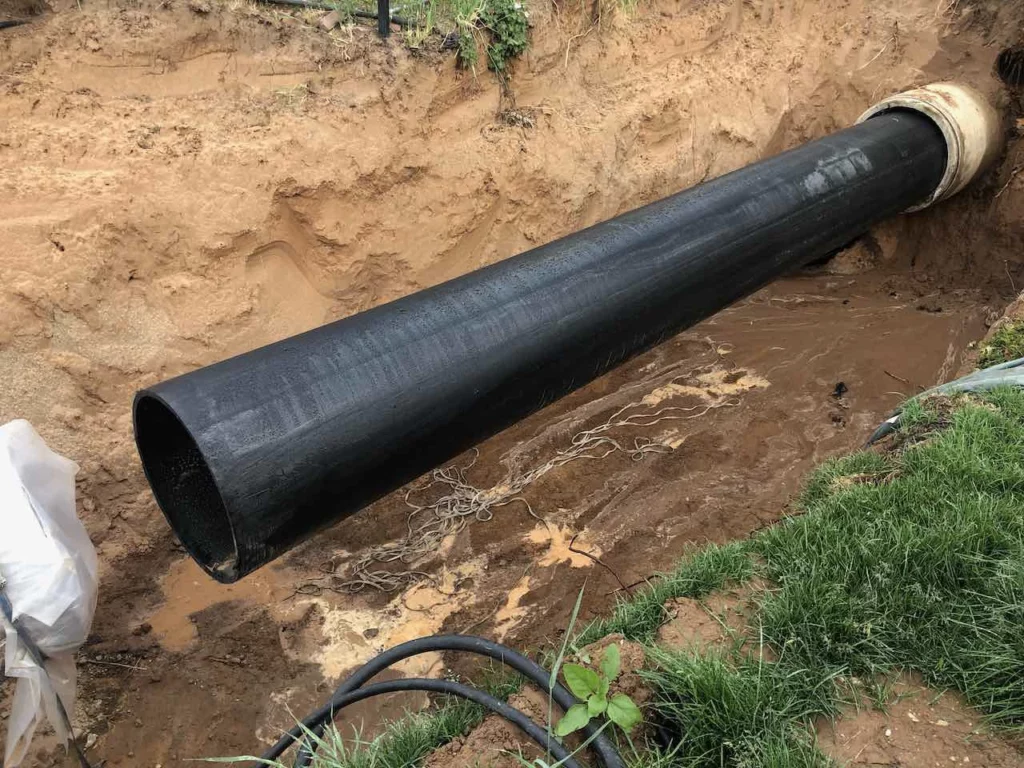Polyethylene (PE) Material Overview
ALL trenchless rehabilitation solutions have inherent strengths and limitations. Polyethylene, Poly, or PE for short; has many terrific qualities that make it an excellent choice for trenchless rehabilitation but in fairness, it does have a few limitations. PE is an excellent rehabilitation option in many water, sewer, mining, industrial, oil and gas applications. In terms of rehabilitation solutions; it can be installed using pipe bursting, slip lining, or compressed fit lining. In summary, PE should strongly be considered for trenchless rehabilitation when the existing pipeline is straight with few elbows and good access to insertion and receiving pits.
Material Capabilities
- Diameter Range: 2″ – 137″
- Maximum Installation Length: 3,000 LF & up
- Maximum Temperature: 140deg F (PE4710) 180deg F (PERT)
- Pressure Rating: 50psi (DR41 PE4710) – 335psi (DR7 PE4710)
- Liner Wall Thickness: Based on Dimension Ratio (DR)
- Maximum Bend Radius: 20D
- Cost: $-$$
- Roughness Coefficient: 150

PE Pipe: Strengths & Weaknesses
Durable
Cost Effective
Speed & Ease of Installation
Possibility of Long Installation Lengths
Relatively Bendable / Flexible
Corrosive and Abrasive Resistant
Fully Fusible
Repairable
Long Useful Life
Wide Variety of Sizes and Pressure Ratings
Ability to Withstand External Loading
Max Freestanding Pressure Rating: 335psi
When Slip Lined, Possible Impact to Flow Output due to Reduction In Cross Sectional Area
May not be suitable in Raised Temperatures Applications.
Max Freestanding Pressure Rating: 335psi





